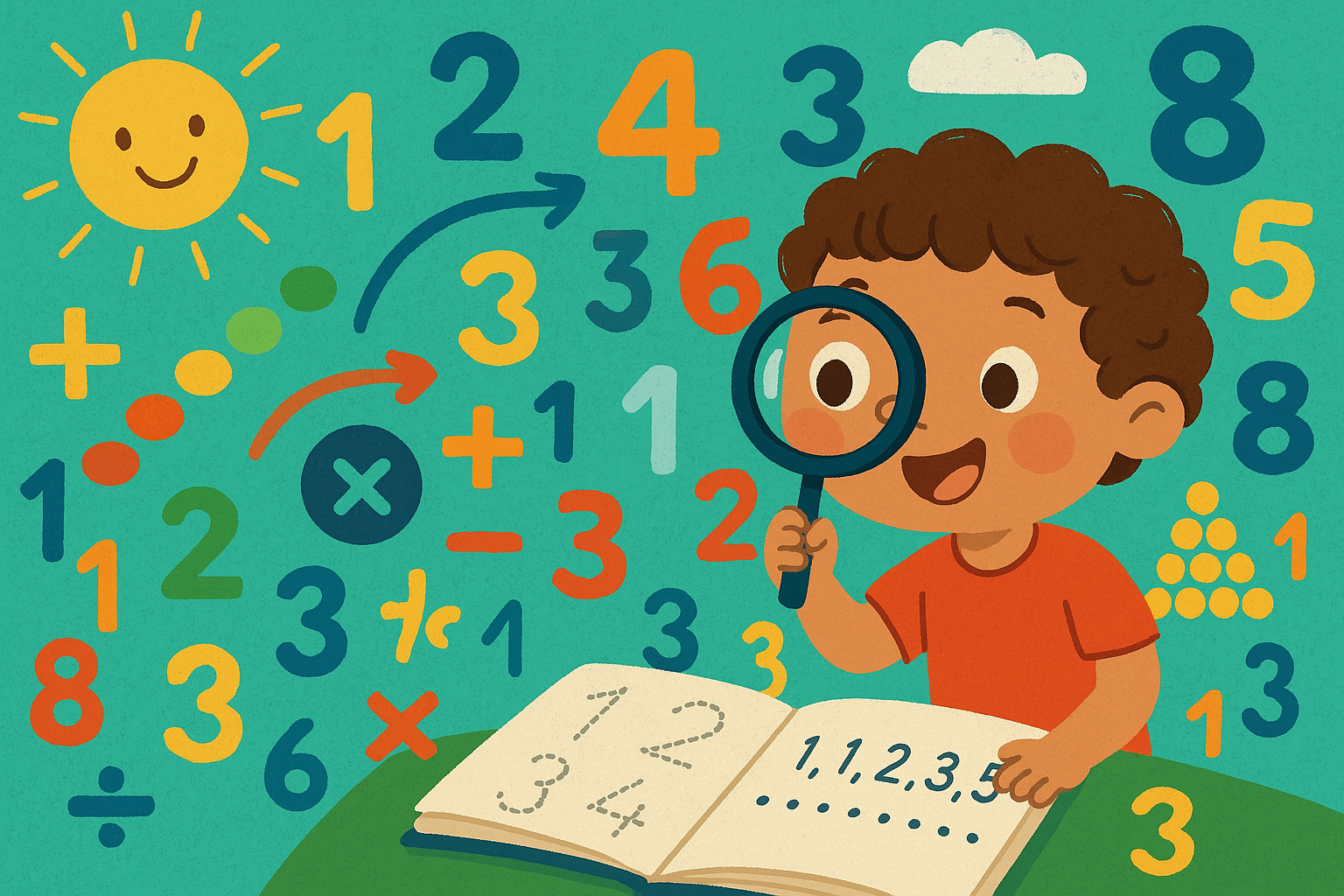🎈 Peek-a-Boo Numbers
🎯 Target Skills
- Early number recognition
- Object permanence
- Visual tracking
🧰 Materials
- 3–5 number cards (handmade or printed)
- Small blanket or scarf
- Stuffed animal or doll
- Household alternatives: paper squares with numbers, dish towel, favorite toy
👣 Step-by-Step
- Write or print numbers 1–5 on cards 🃏
- Hide one number card under a scarf 👀
- Say, “Where did number one go? Let’s find it!” 🗣️
- Lift the scarf together to “find” the number 🎉
- Say the number out loud and clap once with your child 👏
- Repeat with other numbers—add a toy surprise under some! 🧸
- Mix up the order and try to find them in sequence 🔢
- End by laying all cards in a line and counting them slowly together 🧮
🤗 Parent/Caregiver Guidance
Use a cheerful, excited voice—think “peek-a-boo” fun! Repeat numbers often and praise any engagement: “Yes! That’s number 2! You found it!” Encourage pointing or grabbing the number when possible.
🧠 Why This Helps
Number exposure during peek-a-boo helps babies link symbols to sounds. Repetition and surprise build attention and early memory connections.
📚 Research Foundation
- Piaget’s sensorimotor stage—object permanence develops around 8 months
- Numerical cognition research shows infants recognize small quantities visually (Feigenson et al., 2004)
- Peek-a-boo-style repetition supports neural pattern recognition (Shonkoff & Phillips, 2000)
🧦 Sock Sort & Count
🎯 Target Skills
- Matching & sorting
- Hand-eye coordination
- Early numeracy
🧰 Materials
- 6–10 clean socks
- Small laundry basket
- Marker & sticky notes (numbers)
- Household alternatives: mittens, washcloths, paper cutouts
👣 Step-by-Step
- Place socks in a pile 👕
- Write numbers 1–5 on sticky notes and stick inside basket 📄
- Ask your child to help “find a sock” 🧦
- Match each sock and count out loud: “One sock... two socks!” 🔢
- Place matched socks in baskets with number labels 💼
- Cheer after each match: “We found 3!” 🎉
- Point and touch each pair slowly while counting 🖐️
- Repeat as long as interest lasts, then dance with the socks! 💃
🤗 Parent/Caregiver Guidance
Make it playful and silly—use voices or pretend the socks are talking. Offer lots of smiles and light touch to keep it social. Don’t worry about “correct” matching at first!
🧠 Why This Helps
Sorting and matching build early math thinking. Moving while counting links physical action to abstract number ideas, laying groundwork for math fluency later on.
📚 Research Foundation
- Montessori emphasis on real-life materials and order
- Hands-on categorization boosts neural development (Ginsburg, 2006)
- Embodied cognition theory—movement enhances learning (Wilson, 2002)
🔢 Bathtime Number Splash
🎯 Target Skills
- Language development
- Numerical awareness
- Sensory play
🧰 Materials
- Plastic numbers or foam bath numbers
- Plastic cups or spoons
- Bathtub or basin with water
- Household alternatives: bottle caps with numbers, washable markers, safe plastic lids
👣 Step-by-Step
- Fill the tub or basin with warm water 💦
- Place number toys or lids in the water 🔢
- Scoop one number and say it excitedly: “Look! It’s 3!” 🎉
- Pour water over the number to make it extra fun 🚿
- Arrange 3 toys next to the number, count out loud 🧸🧸🧸
- Repeat with other numbers—don’t rush, follow the child’s rhythm 🐢
- Sing a counting song while playing 🎶
- End by lining up numbers on the edge of the tub 🛁
🤗 Parent/Caregiver Guidance
Use your voice like a storybook! Be animated, use rhymes and songs. If they splash away the numbers, just laugh—it’s all part of learning through joy.
🧠 Why This Helps
Water play keeps little ones focused longer, making space for gentle number exposure. Repeating simple number words during play builds early math vocabulary.
📚 Research Foundation
- Repetition and immersion support early math learning (Geary, 2000)
- Play-based learning improves language and number skills (Berk & Winsler, 1995)
- Water play promotes attention and exploration (Trawick-Smith, 2014)
.svg)
